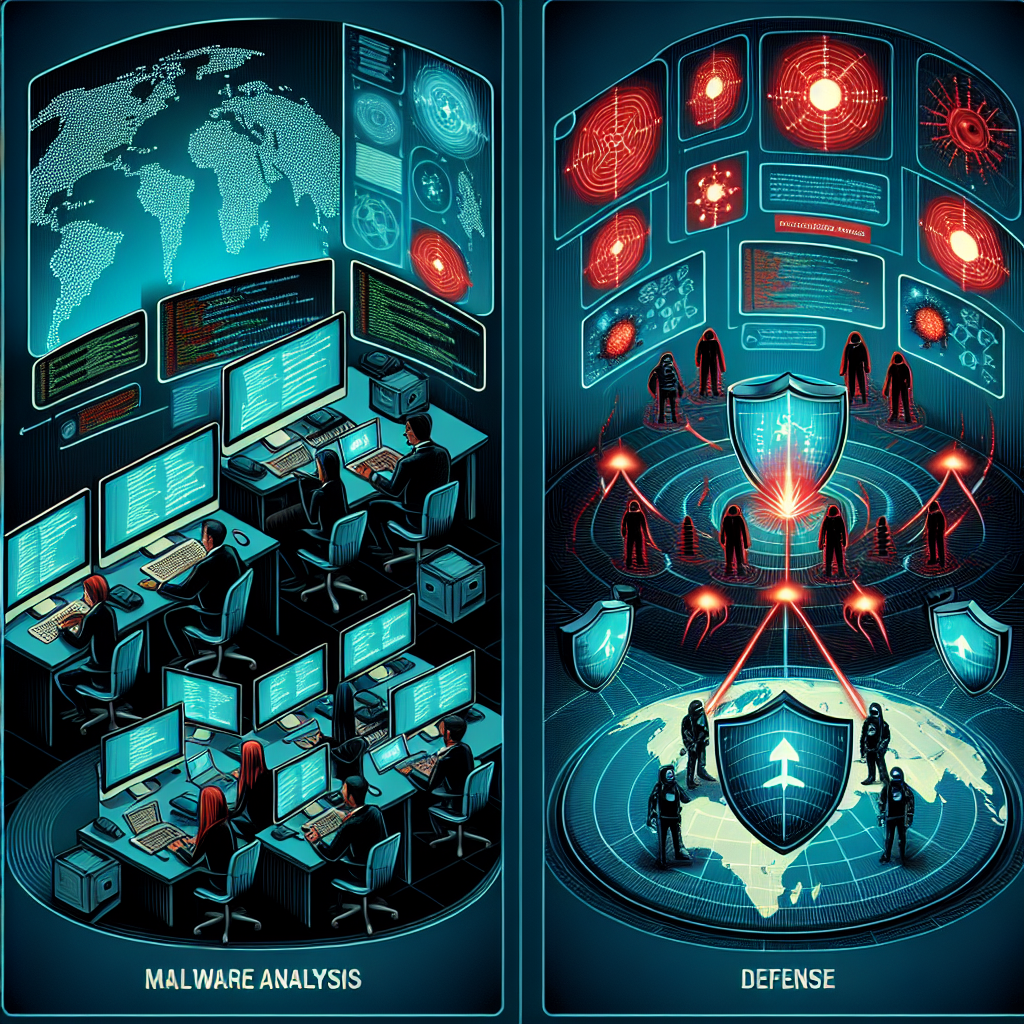
Description
Major Related too : Cybersecurity, Information Security, Computer Science, Digital Forensics, Network Security, Information Assurance, Computer Engineering, Security Engineering, Information Technology Security, Cyber Operations
Description : In the ever-evolving landscape of cybersecurity, the battle against malware remains one of the most critical challenges faced by organizations and individuals alike. From sophisticated ransomware attacks to stealthy trojans, malicious software lurks in the shadows, seeking to exploit vulnerabilities and wreak havoc on digital infrastructure. However, armed with the right techniques for malware analysis and defense, cybersecurity professionals can unravel the mysteries of malware, understand its behavior, and develop robust strategies for safeguarding against digital threats. Unveiling Malware: The Art of Analysis At the heart of effective malware defense lies the ability to dissect and understand malicious software through rigorous analysis. Malware analysis encompasses a variety of techniques, from static analysis to dynamic analysis, aimed at uncovering the inner workings of malware and identifying its capabilities and intent. Through reverse engineering, code analysis, and sandboxing, cybersecurity analysts can dissect malware samples, unravel their obfuscation techniques, and uncover hidden payloads and malicious behaviors. Understanding Malware Behavior: Peering into the Shadows To effectively defend against malware, one must first understand its behavior and modus operandi. Malware exhibits a wide range of behaviors, from file manipulation and data exfiltration to network communication and system exploitation. By observing malware in controlled environments and analyzing its interactions with the host system, cybersecurity analysts can gain insights into its behavior patterns, command-and-control infrastructure, and attack vectors. This deep understanding enables organizations to develop tailored defense strategies that target the specific tactics, techniques, and procedures employed by malicious actors. Developing Defense Strategies: Fortifying the Digital Fortress Armed with insights gleaned from malware analysis, organizations can develop proactive defense strategies to mitigate the risk posed by malicious software. From network segmentation and access controls to endpoint detection and response (EDR) solutions, cybersecurity professionals deploy a variety of defensive measures to detect, contain, and eradicate malware threats. Threat intelligence sharing, incident response planning, and security awareness training further bolster defenses, empowering organizations to respond swiftly and decisively to malware attacks. Embracing Innovation: Staying Ahead of the Curve As malware threats continue to evolve in sophistication and scale, cybersecurity professionals must remain vigilant and adaptive in their defense strategies. Emerging technologies such as artificial intelligence (AI), machine learning (ML), and behavioral analytics hold promise in augmenting malware detection and response capabilities. By harnessing the power of automation and predictive analytics, organizations can stay one step ahead of cyber adversaries, proactively identifying and neutralizing malware threats before they can inflict harm. Collaboration and Knowledge Sharing: Strength in Unity In the fight against malware, collaboration and knowledge sharing are indispensable weapons in the cybersecurity arsenal. Information sharing platforms, threat intelligence feeds, and industry partnerships facilitate the exchange of insights, tactics, and best practices among cybersecurity professionals. By pooling resources and collective expertise, the cybersecurity community can amplify its collective defense capabilities, thwarting malware attacks and safeguarding the digital ecosystem. Securing the Future of Cyberspace In conclusion, malware analysis and defense are fundamental pillars of cybersecurity, essential for protecting organizations and individuals against the ever-present threat of malicious software. By mastering the art of malware analysis, understanding its behavior, and developing robust defense strategies, cybersecurity professionals can fortify the digital fortress and safeguard the integrity, confidentiality, and availability of critical assets. Through collaboration, innovation, and unwavering vigilance, we can secure the future of cyberspace and ensure a safer digital world for all.
Syllabus
-
Malware Analysis and Defense
- Cybersecurity Mastery: Complete Course in a Single Video | Cybersecurity For Beginners
- Malware Analysis: What’s the Point?
- MALWARE ANALYSIS // How to get started with John Hammond
- Introduction To Dynamic Malware Analysis
- Malware Analysis with Yara | TryHackMe Cyber Defense Pathway
- Malware Detection and Protection
- Threat Intelligence and the Limits of Malware Analysis with Joe Slowik - SANS CTI Summit 2020
- Analyzing the Zeus Banking Trojan - Malware Analysis Project 101
- Malware Detection Evasion with Debugging | TryHackMe Dynamic Malware Analysis
- Ethical hacking techniques and tools part 1 by Syed Hassan